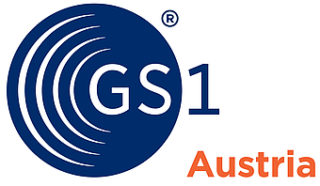Good interfaces are crucial

Businesses increasingly rely on Electronic Data Interchange (EDI) via their ERP system.
In many industries, working without ERPs is no longer an option. And yet, they would be only half as useful if a supplier’s ERP were not able to communicate with their clients’ ERP or the other way around. ERP providers use different internal formats. For instance, IDoc, which is used by SAP or XML used by Microsoft. To transfer information from one system to another, high-performance interfaces are key. To achieve that, data gets converted, which is usually performed by EDI service providers. A “language” that is actually understood around the world in the area of Electronic Data Interchange is EDIFACT. Senders and recipients oftentimes have their own standards-based EDIFACT guidelines and their own specific fields. “In practice, data is usually exchanged via eXite, a centralized data hub that connects more than 20,000 businesses in central and eastern Europe,” said Gerd Marlovits, CEO of EDITEL. Many orders, despatch advices, invoices, remittance advices, and other documents are handled via a fully automated process on the platform. In recent years, many businesses have decided to leverage the power of ERP by adding an EDI connection, as this makes manual work obsolete and reduces the room for error.
Exchange article master data with the use of interfaces
Thirty years ago, when PCs were first widely used, IT technicians had already realized how useful interfaces were. However, back then, experts were far from utilizing interfaces to their full potential. Today, article master data or consumption forecasts are exchanged with the use of interfaces, to name just one of many examples. “In many industries, article master data are the basic requirement for all orders. In Austria, they can include up to 230 attributes and provide information about a product’s dimensions and weight as well as nutritional value and allergens,” explained Mr. Marlovits.
Adapt production capacities and prevent food waste
Interfaces also play an increasingly important role for specific concepts used in the food industry. These include Vendor Managed Inventory (VMI) as well as Collaborative Planning, Forecasting and Replenishment (CPFR). These concepts revolve around the idea of food manufacturers instead of retailers overseeing replenishment. To make this work smoothly, manufacturers and retailers share inventory information and sales numbers via an interface on a regular basis. Manufacturers then use this data to make sure shelves in grocery stores are always well stocked with the product in question. This makes planning considerably easier because production capacities can swiftly be adapted to changing needs. In addition, this prevents food waste because it helps avoid overproduction.
The important role of EDI and interfaces for all industries
EDI and interfaces also play an important role in many other industries. For logistics providers, for instance, factors like cost efficiency and swift response times are of the essence. Manual entries take time and increase the room for error. Mistakes can be disastrous, especially in the pharmaceutical industry, where EDI ensures that batch numbers and expiration dates are exchanged without a glitch. In the financial sector, EDI allows for mass transfers and reports to supervisory authorities while in the automotive industry, it allows for concepts such as the “just-in-time approach,” where deliveries are made exactly as needed.
The use of Web EDI application as a WWW interface
It is safe to say that while life and work without EDI are no longer an option in many industries, some small businesses do not yet have the technical infrastructure to use it. Oftentimes, they do not use ERP for financial reasons, which means that they cannot use integrated EDI solutions either. However, suppliers to large businesses are usually encouraged to provide their invoices electronically. But there is a “trick” that benefits everyone. By using the inexpensive Web EDI service, businesses can manually enter their data on an online portal. Data recipients on the other side cannot tell the difference between online EDI and traditional EDI processes and can proceed to process structured data as they usually do. To use Web EDI, all that is needed is Internet access. Users log on to the Web EDI application with their password and subsequently enter their data on the platform. Ultimately, Web EDI is also a sort of interface – a WWW interface.
iStockphoto copyright Maxiphoto



